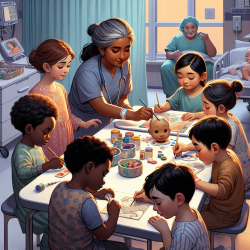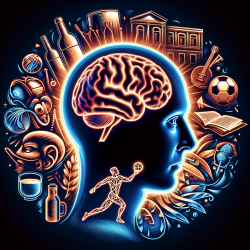Discovering Empathy in Medical Practice: A Journey from Skillful to Empathic
In the fast-paced world of medical education, the balance between technical proficiency and humanistic care is often challenging to maintain. However, a recent study titled From skillful to empathic: evaluating shifts in medical students' perceptions of surgeons through a combined patient as teacher and arts-based reflection program provides a fresh perspective on how empathy can be cultivated among future medical practitioners.
The Study: An Overview
Conducted at the University of Toronto, this research explored the impact of a combined Patient as Teacher (PAT) and Arts-Based Reflection (ABR) program on third-year medical students. The program aimed to shift students' perceptions of surgeons from purely technical experts to empathic caregivers.
Students were asked to list the top five attributes of a surgeon before and after participating in the program. The study found a significant increase in the ranking of humanistic characteristics, such as empathy and communication, as essential surgeon attributes.
Key Findings
- The probability of students ranking a humanistic characteristic as the most important attribute of a surgeon increased by 17%.
- The likelihood of humanistic traits being among the top three attributes rose by 21%.
These results suggest that integrating PAT and ABR into medical education can effectively foster a more humanistic approach to patient care.
Implementing Humanistic Education in Practice
For practitioners, the implications of this study are profound. Here are some ways to incorporate these findings into your practice:
- Engage Patients as Teachers: Invite patients to share their experiences and insights with medical teams. This can deepen understanding and foster empathy.
- Incorporate Arts-Based Reflection: Encourage reflection through creative outlets such as art, music, or writing. This can help practitioners process patient interactions and enhance empathic skills.
- Promote Continuous Learning: Stay informed about innovative educational approaches that prioritize humanistic care.
Encouraging Further Research
While this study provides valuable insights, there is room for further exploration. Practitioners are encouraged to conduct additional research on the long-term effects of humanistic education programs and their impact on patient care outcomes.
Conclusion
Incorporating humanistic education into medical training is not just beneficial but essential. By shifting focus from purely technical skills to include empathy and communication, practitioners can enhance patient care and satisfaction. As the study suggests, the integration of PAT and ABR programs can be a transformative step in this direction.
To read the original research paper, please follow this link: From skillful to empathic: evaluating shifts in medical students' perceptions of surgeons through a combined patient as teacher and arts-based reflection program.










